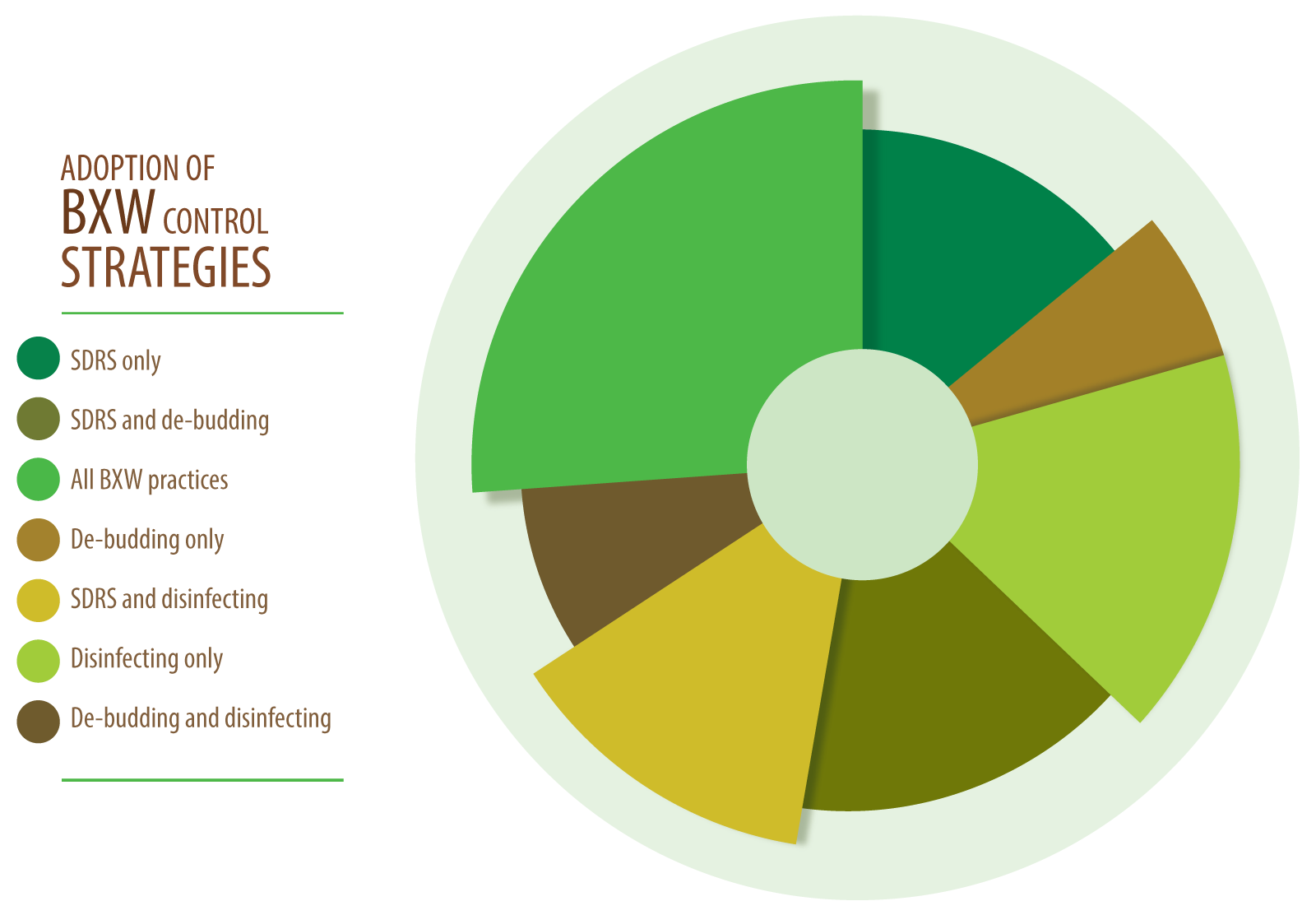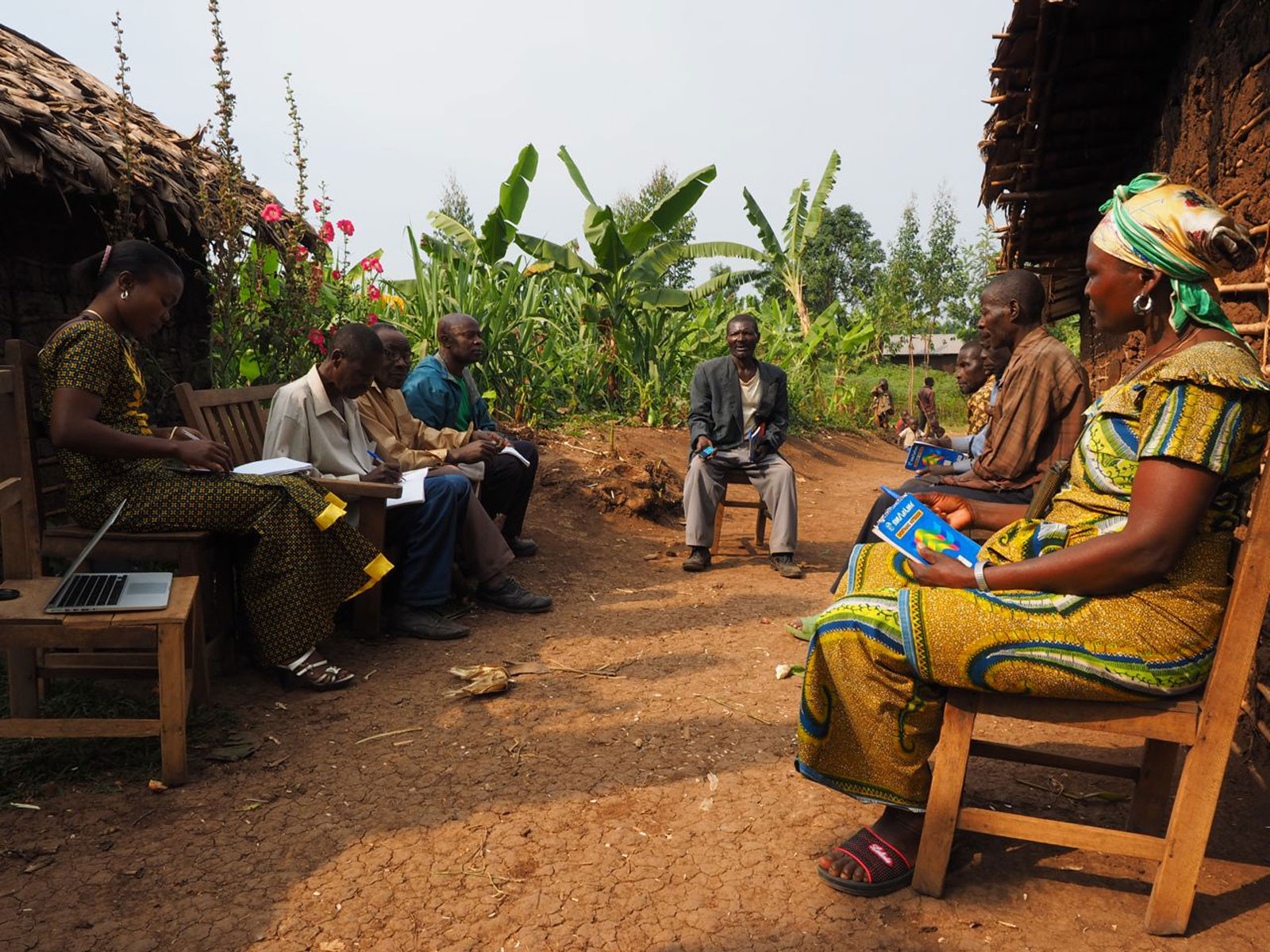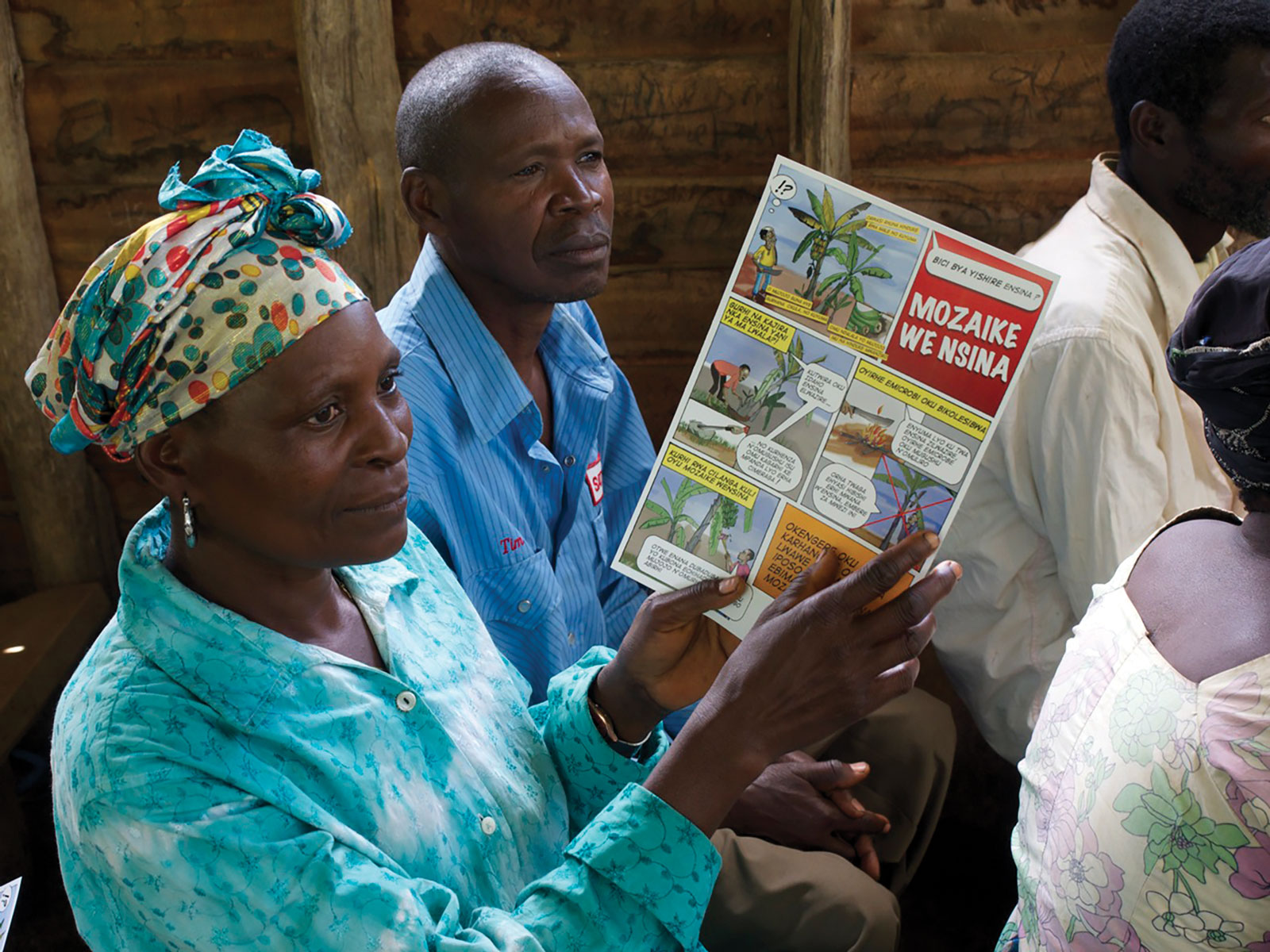[cs_content][cs_section bg_image=”https://annualreport2019.rtb.cgiar.org/wp-content/uploads/2020/09/fp3-top.png” parallax=”false” separator_top_type=”none” separator_top_height=”50px” separator_top_inset=”0px” separator_top_angle_point=”50″ separator_bottom_type=”none” separator_bottom_height=”50px” separator_bottom_inset=”0px” separator_bottom_angle_point=”50″ _order=”0″ _label=”Section 1″ style=”margin: -25px 0px 0px;padding: 0px;background-position: left top;background-size: 100%;”][cs_row inner_container=”true” marginless_columns=”false” bg_color=”transparent” style=”margin: 0px auto;padding: 250px 0px 0px;”][cs_column fade=”false” fade_animation=”in” fade_animation_offset=”45px” fade_duration=”750″ type=”1/1″ style=”padding: 0px 0 0px 0px;”][x_custom_headline level=”h2″ looks_like=”h3″ accent=”false” class=”cs-ta-left” style=”color: rgb(80, 184, 77);margin-top: 0px;”]Farmers increase profit by managing a serious banana disease[/x_custom_headline][/cs_column][/cs_row][/cs_section][cs_element_section _id=”5″ ][cs_element_layout_row _id=”6″ ][cs_element_layout_column _id=”7″ ][cs_text]
Farmers in East Africa are adopting practices to control banana Xanthomonas wilt (BXW). Adoption is highest on subsistence farmers. Benefits are higher on larger farms. Women who receive training in BXW control are more likely to adopt these profitable, disease-control techniques.
Banana Xanthomonas wilt (BXW) is rapidly spreading westwards from East Africa to the plantain belt of West and Central Africa. So, understanding how farmers adopt technology to combat the disease is crucial for protecting the banana and plantain crops. Research by Walter Ocimati and colleagues at Wageningen University and Bioversity International in 13 villages in the DR Congo shows that bananas were the most important crop before BXW struck. Now only one village ranks bananas as their top crop, and farmers are reluctantly replacing bananas and plantains with other crops.
Farmers in Uganda were known to be adopting technologies that came from RTB research to control BXW including: 1) removing the male flower bud that attracts the bees and other insects that vector the bacteria, 2) single diseased stem removal (removing a sick stem, but not the whole banana mat), and 3) disinfecting metal tools with fire or a sodium hypochlorite solution to keep from spreading the disease to healthy plants. Enoch Kikulwe (Bioversity International) and colleagues conducted a large, quantitative survey of 1,224 farmers in Uganda. This was the first proper adoption survey of BXW control practices with information about numbers of adopters, practices adopted and estimates of benefits linked to these changes in behavior.
[/cs_text][cs_element_image _id=”9″ ][cs_element_text _id=”10″ ][/cs_element_layout_column][/cs_element_layout_row][cs_element_layout_row _id=”11″ ][cs_element_layout_column _id=”12″ ][cs_text]
The study used advanced statistical methods to estimate adoption and the underlying contributory variables for the three BXW control methods. As the following graph shows, 70% of adopters took up cutting of single diseased stems, either alone or in combination with other control strategies.
[/cs_text][cs_element_image _id=”14″ ][cs_text]
Training boosts the adoption of control measures, especially if bananas are an important crop to the household. Over half (55%) of the sampled farmers received training on BXW control. Nevertheless, 69% of the farmers who adopted the whole BXW control package had received training (while 31% adopted without training). Training women farmers increased the likelihood that the household would adopt all three control methods by nine percentage points.
A third of the farmers (33%) produced bananas at the subsistence level, and these farmers were more likely to adopt all of the control practices.
[/cs_text][/cs_element_layout_column][/cs_element_layout_row][cs_element_layout_row _id=”16″ ][cs_element_layout_column _id=”17″ ][cs_element_icon _id=”18″ ][cs_element_quote _id=”19″ ][cs_element_icon _id=”20″ ][/cs_element_layout_column][/cs_element_layout_row][cs_element_layout_row _id=”21″ ][cs_element_layout_column _id=”22″ ][cs_text]
Non-adopters earned the least from their banana production, as adopting BXW control measures reduced the disease incidence and increased banana yields and sales. Adopting all three control practices was more profitable than using one or two. Adoption of the whole control package helped to prevent the BXW disease and increased the value of surveyed farmers’ banana production by USD 468 per ha, while adopting two practices improved that value by USD 348 per ha.
A solid understanding of the technologies helps farmers to improve their income more than other farmers who were not trained, even those who adopted the whole package. Farmers trained in BXW earned an average of 176% more when they adopted all three practices, while untrained adopters of all three practices earned only 113% more. Uganda has about 800,000 banana- growing households. Extrapolating the results of the survey, perhaps 600,000 households have adopted some of the BXW control strategies.
[/cs_text][cs_element_image _id=”24″ ][cs_element_image _id=”25″ ][cs_element_text _id=”26″ ][cs_text]
Meanwhile, other projects in RTB continue to find new ways to share information about managing BXW in East Africa. A collaboration involving the GREAT project (Gender-Responsive Researchers Equipped for Agricultural Transformation) found that smallholders in Burundi are poorly informed about BXW, limiting their ability to manage the disease. Francois Iradukunda and colleagues at Bioversity International found that men do most of the work with the banana crop and they handle the sales, while women manage plantains grown to eat at home. Men are also more likely to attend trainings. Men and women alike see bananas as a men’s crop, further constraining female participation in BXW control. Increasing women’s access to BXW management would probably increase adoption and benefits, especially in households where more of the plantains are eaten at home, and not sold.
From 2015 to 2018, the AMASHIGA development program, led by Bioversity International, taught four farmer learning groups in Burundi to manage BXW by single diseased stem removal (SDSR). Removing just the diseased stem is effective, and it takes much less work than removing a whole diseased mat of bananas. In one year, the incidence of BXW in the four sites declined from 15% to less than 1%. Bioversity International is now scaling out this technique by training 230 extension agents who are teaching 60 farmers each (13,800 households) in Muyinga Province, Burundi, using fact sheets, radio and video, as part of the Broadening the Scaling of BXW Management project, which is also part of AMASHIGA.
[/cs_text][cs_element_image _id=”28″ ][cs_element_text _id=”29″ ][/cs_element_layout_column][/cs_element_layout_row][/cs_element_section][cs_section bg_color=”transparent” parallax=”false” separator_top_type=”none” separator_top_height=”50px” separator_top_inset=”0px” separator_top_angle_point=”50″ separator_bottom_type=”none” separator_bottom_height=”50px” separator_bottom_inset=”0px” separator_bottom_angle_point=”50″ _label=”Section 2″ style=”margin: 0px;padding: 30px 0px 45px;background-size: 100%;background-position: top;”][cs_row inner_container=”true” marginless_columns=”false” style=”margin: 0px auto;padding: 0px;”][cs_column fade=”false” fade_animation=”in” fade_animation_offset=”45px” fade_duration=”750″ type=”1/1″ style=”padding: 0px 0 0px 0px;”][x_share title=”SHARE THIS” share_title=”” facebook=”true” twitter=”true” google_plus=”false” linkedin=”true” pinterest=”false” reddit=”false” email=”true” email_subject=””][/cs_column][/cs_row][/cs_section][/cs_content][cs_content_seo]Farmers increase profit by managing a serious banana disease
Farmers in East Africa are adopting practices to control banana Xanthomonas wilt (BXW). Adoption is highest on subsistence farmers. Benefits are higher on larger farms. Women who receive training in BXW control are more likely to adopt these profitable, disease-control techniques.
Banana Xanthomonas wilt (BXW) is rapidly spreading westwards from East Africa to the plantain belt of West and Central Africa. So, understanding how farmers adopt technology to combat the disease is crucial for protecting the banana and plantain crops. Research by Walter Ocimati and colleagues at Wageningen University and Bioversity International in 13 villages in the DR Congo shows that bananas were the most important crop before BXW struck. Now only one village ranks bananas as their top crop, and farmers are reluctantly replacing bananas and plantains with other crops.
Farmers in Uganda were known to be adopting technologies that came from RTB research to control BXW including: 1) removing the male flower bud that attracts the bees and other insects that vector the bacteria, 2) single diseased stem removal (removing a sick stem, but not the whole banana mat), and 3) disinfecting metal tools with fire or a sodium hypochlorite solution to keep from spreading the disease to healthy plants. Enoch Kikulwe (Bioversity International) and colleagues conducted a large, quantitative survey of 1,224 farmers in Uganda. This was the first proper adoption survey of BXW control practices with information about numbers of adopters, practices adopted and estimates of benefits linked to these changes in behavior.
Application of the novel SDSR technique to control BXW: a woman in eastern DR Congo cuts a diseased stem at soil level. B. Van Schagen (Alliance Bioversity-CIAT).
The study used advanced statistical methods to estimate adoption and the underlying contributory variables for the three BXW control methods. As the following graph shows, 70% of adopters took up cutting of single diseased stems, either alone or in combination with other control strategies.
Training boosts the adoption of control measures, especially if bananas are an important crop to the household. Over half (55%) of the sampled farmers received training on BXW control. Nevertheless, 69% of the farmers who adopted the whole BXW control package had received training (while 31% adopted without training). Training women farmers increased the likelihood that the household would adopt all three control methods by nine percentage points.
A third of the farmers (33%) produced bananas at the subsistence level, and these farmers were more likely to adopt all of the control practices.
Higher adoption by subsistence farmers could be due to the centrality of their crop to their livelihoods, or the relative ease of adopting the practices on their smaller acreage, says Enoch Kikulwe. Farmers who also work off-farm are less likely to adopt BXW control practices.
Non-adopters earned the least from their banana production, as adopting BXW control measures reduced the disease incidence and increased banana yields and sales. Adopting all three control practices was more profitable than using one or two. Adoption of the whole control package helped to prevent the BXW disease and increased the value of surveyed farmers’ banana production by USD 468 per ha, while adopting two practices improved that value by USD 348 per ha.
A solid understanding of the technologies helps farmers to improve their income more than other farmers who were not trained, even those who adopted the whole package. Farmers trained in BXW earned an average of 176% more when they adopted all three practices, while untrained adopters of all three practices earned only 113% more. Uganda has about 800,000 banana- growing households. Extrapolating the results of the survey, perhaps 600,000 households have adopted some of the BXW control strategies.
A woman reads a flyer as part of efforts to increase the uptake of the SDSR technique. B. Van Schagen (Alliance Bioversity-CIAT)
Meanwhile, other projects in RTB continue to find new ways to share information about managing BXW in East Africa. A collaboration involving the GREAT project (Gender-Responsive Researchers Equipped for Agricultural Transformation) found that smallholders in Burundi are poorly informed about BXW, limiting their ability to manage the disease. Francois Iradukunda and colleagues at Bioversity International found that men do most of the work with the banana crop and they handle the sales, while women manage plantains grown to eat at home. Men are also more likely to attend trainings. Men and women alike see bananas as a men’s crop, further constraining female participation in BXW control. Increasing women’s access to BXW management would probably increase adoption and benefits, especially in households where more of the plantains are eaten at home, and not sold.
From 2015 to 2018, the AMASHIGA development program, led by Bioversity International, taught four farmer learning groups in Burundi to manage BXW by single diseased stem removal (SDSR). Removing just the diseased stem is effective, and it takes much less work than removing a whole diseased mat of bananas. In one year, the incidence of BXW in the four sites declined from 15% to less than 1%. Bioversity International is now scaling out this technique by training 230 extension agents who are teaching 60 farmers each (13,800 households) in Muyinga Province, Burundi, using fact sheets, radio and video, as part of the Broadening the Scaling of BXW Management project, which is also part of AMASHIGA.
Farmer training in BXW control in eastern DR Congo, as part of out-scaling disease control to affected banana production regions in east and central Africa. B. Van Schagen (Alliance Bioversity-CIAT)
SHARE THIS



 [/cs_content_seo]
[/cs_content_seo]